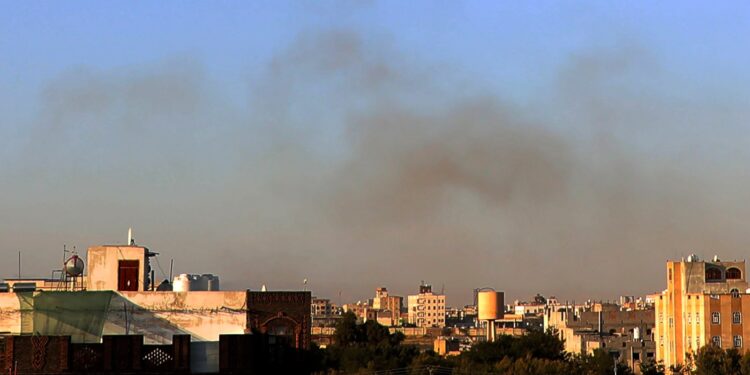
A new round of Israeli airstrikes in Yemen on Thursday targeted the Houthi rebel-held capital and multiple ports, while the World Health Organization’s director-general said the bombardment occurred nearby as he prepared to board a flight in Sanaa, with a crew member injured.
“The air traffic control tower, the departure lounge — just a few meters from where we were — and the runway were damaged,” Tedros Adhanom Ghebreyesus said on the social media platform X.
Our mission to negotiate the release of @UN staff detainees and to assess the health and humanitarian situation in #Yemen concluded today. We continue to call for the detainees’ immediate release.
As we were about to board our flight from Sana’a, about two hours ago, the airport… pic.twitter.com/riZayWHkvf
— Tedros Adhanom Ghebreyesus (@DrTedros) December 26, 2024
He added that he and U.N. colleagues were safe. “We will need to wait for the damage to the airport to be repaired before we can leave,” he said, without mentioning the source of the bombardment. U.N. spokesperson Stephanie Tremblay later said the injured person was with the U.N. Humanitarian Air Service.
At least three people were later reported killed and dozens injured in the airport strike. The U.N. team members left the airport and were “safe and sound” in Sanaa while the injured crew member was being treated at a hospital, she said.
Tremblay said the damage assessment would be made on Friday morning to see whether WHO chief and the U.N. team can leave Yemen.
U.N. Secretary-General Antonio Guterres condemned the escalation in attacks between Yemen and Israel and described Thursday’s attacks as “especially alarming,” Tremblay said.
Israel’s army later told The Associated Press it wasn’t aware that the WHO chief or delegation was at the location in Yemen.
The Israeli strikes followed several days of Houthi launches setting off sirens in Israel. The Israeli military in a statement said it attacked infrastructure used by the Iran-backed Houthis at the international airport in Sanaa and ports in Hodeida, Al-Salif and Ras Qantib, along with power stations, asserting they were used to smuggle in Iranian weapons and for the entry of senior Iranian officials.
Israel’s military added it had “capabilities to strike very far from Israel’s territory — precisely, powerfully, and repetitively.”
The strikes, carried out over 1,000 miles from Jerusalem, came a day after Israeli Prime Minister Benjamin Netanyahu said “the Houthis, too, will learn what Hamas and Hezbollah and Assad’s regime and others learned” as his military has battled those more powerful proxies of Iran.
The Houthi-controlled satellite channel al-Masirah reported multiple deaths and showed broken windows, collapsed ceilings and a bloodstained floor and vehicle. Iran’s foreign ministry condemned the strikes. The U.S. military also has targeted the Houthis in recent days.
The U.N. has said the targeted ports are important entryways for humanitarian aid for Yemen, the poorest Arab nation that plunged into a civil war in 2014.
Over the weekend, 16 people were wounded when a Houthi missile hit a playground in the Israeli city of Tel Aviv, while other missiles and drones have been shot down. Last week, Israeli jets struck Sanaa and Hodeida, killing nine people, calling it a response to previous Houthi attacks. The Houthis also have been targeting shipping on the Red Sea corridor, calling it solidarity with Palestinians in Gaza.
The U.N. Security Council has an emergency meeting Monday in response to an Israeli request that it condemn the Houthi attacks and Iran for supplying them weapons.







